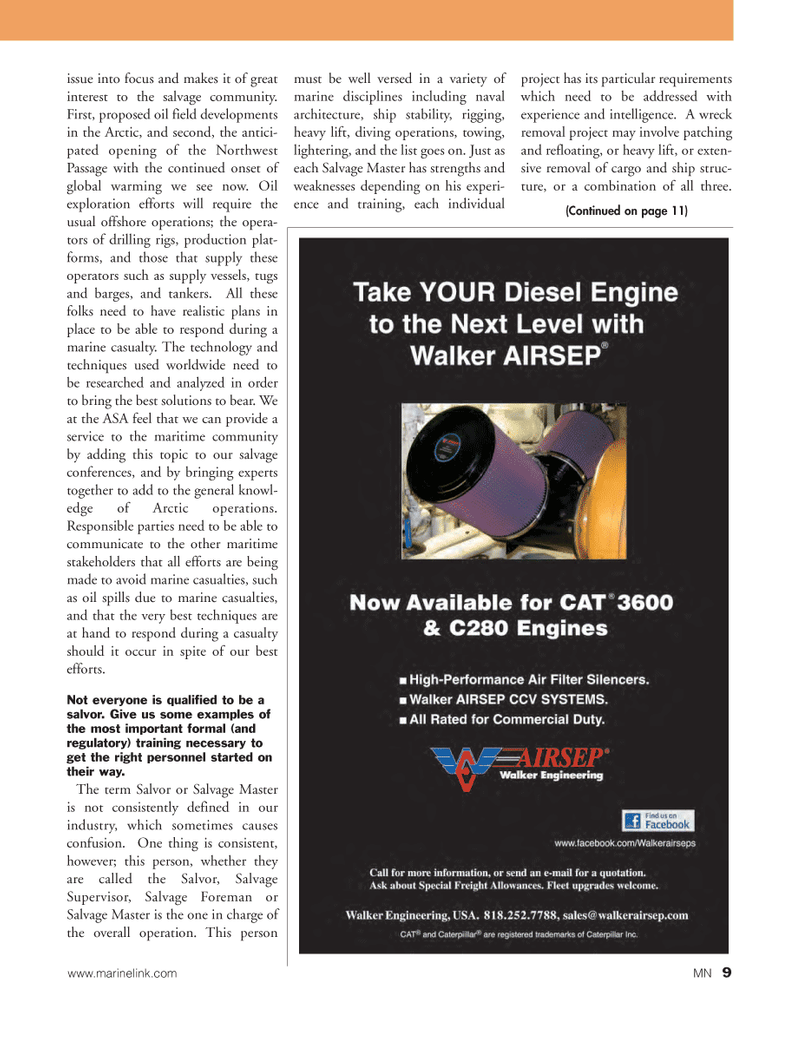
Page 9: of Marine News Magazine (February 2012)
Inland Bulk Transportation
Read this page in Pdf, Flash or Html5 edition of February 2012 Marine News Magazine
www.marinelink.com MN9issue into focus and makes it of great interest to the salvage community. First, proposed oil field developments in the Arctic, and second, the antici- pated opening of the Northwest Passage with the continued onset of global warming we see now. Oil exploration efforts will require the usual offshore operations; the opera- tors of drilling rigs, production plat- forms, and those that supply theseoperators such as supply vessels, tugs and barges, and tankers. All thesefolks need to have realistic plans in place to be able to respond during a marine casualty. The technology and techniques used worldwide need tobe researched and analyzed in order to bring the best solutions to bear. We at the ASA feel that we can provide a service to the maritime community by adding this topic to our salvage conferences, and by bringing experts together to add to the general knowl- edge of Arctic operations. Responsible parties need to be able to communicate to the other maritimestakeholders that all efforts are being made to avoid marine casualties, such as oil spills due to marine casualties,and that the very best techniques are at hand to respond during a casualty should it occur in spite of our bestefforts. Not everyone is qualified to be asalvor. Give us some examples of the most important formal (andregulatory) training necessary to get the right personnel started ontheir way. The term Salvor or Salvage Master is not consistently defined in ourindustry, which sometimes causes confusion. One thing is consistent, however; this person, whether they are called the Salvor, Salvage Supervisor, Salvage Foreman or Salvage Master is the one in charge of the overall operation. This person must be well versed in a variety of marine disciplines including naval architecture, ship stability, rigging, heavy lift, diving operations, towing, lightering, and the list goes on. Just as each Salvage Master has strengths and weaknesses depending on his experi- ence and training, each individualproject has its particular requirements which need to be addressed with experience and intelligence. A wreck removal project may involve patching and refloating, or heavy lift, or exten- sive removal of cargo and ship struc- ture, or a combination of all three. (Continued on page 11)MN#2 (1-17):MN 2011 Layouts 2/3/2012 11:21 AM Page 9

 8
8

 10
10
